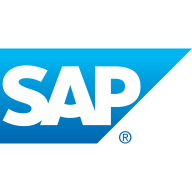

Find out what your peers are saying about Hyland, Microsoft, DocuWare and others in Document Management Software.
| Product | Market Share (%) |
|---|---|
| Hyland Perceptive Content | 3.0% |
| Alfresco | 15.4% |
| Microsoft Purview Data Lifecycle Management | 11.6% |
| Other | 70.0% |
| Product | Market Share (%) |
|---|---|
| SAP Extended Enterprise Content Management | 1.1% |
| SharePoint | 15.1% |
| OpenText Documentum Content Management | 10.6% |
| Other | 73.2% |

Perceptive Content is a scalable content services platform that manages the entire content lifecycle, from capture to disposition. Flexible functionality across multiple business applications, integration with virtually any business application and a simple-to-use interface help Perceptive Content transform internal processes and the customer experience. Perceptive Content helps users work smarter by surfacing content in context with other relevant business information. Digital documents can be viewed simultaneously, which promotes enhanced collaboration and communication among employees, customers and vendors. Locating relevant documents in the context of a business process increases customer satisfaction and employee productivity. Automated lifecycle management helps organizations comply with their records and retention policies, which reduces the risk of compliance violations and resulting fees and fines.
A digital core built on the SAP HANA business data platform and integrated applications for content management comprise the next-generation business model to complete your digital transformation and help you manage unstructured content as part of the business transactions more effectively while facilitating collaboration and storing content to avoid redundancies, minimize information growth, and support regulatory compliance. The SAP Extended Enterprise Content Management application by OpenText helps you engage customers with a 360-degree view of their profile and optimize procurement processes, employee productivity, process efficiency, and equipment ROI.
We monitor all Document Management Software reviews to prevent fraudulent reviews and keep review quality high. We do not post reviews by company employees or direct competitors. We validate each review for authenticity via cross-reference with LinkedIn, and personal follow-up with the reviewer when necessary.